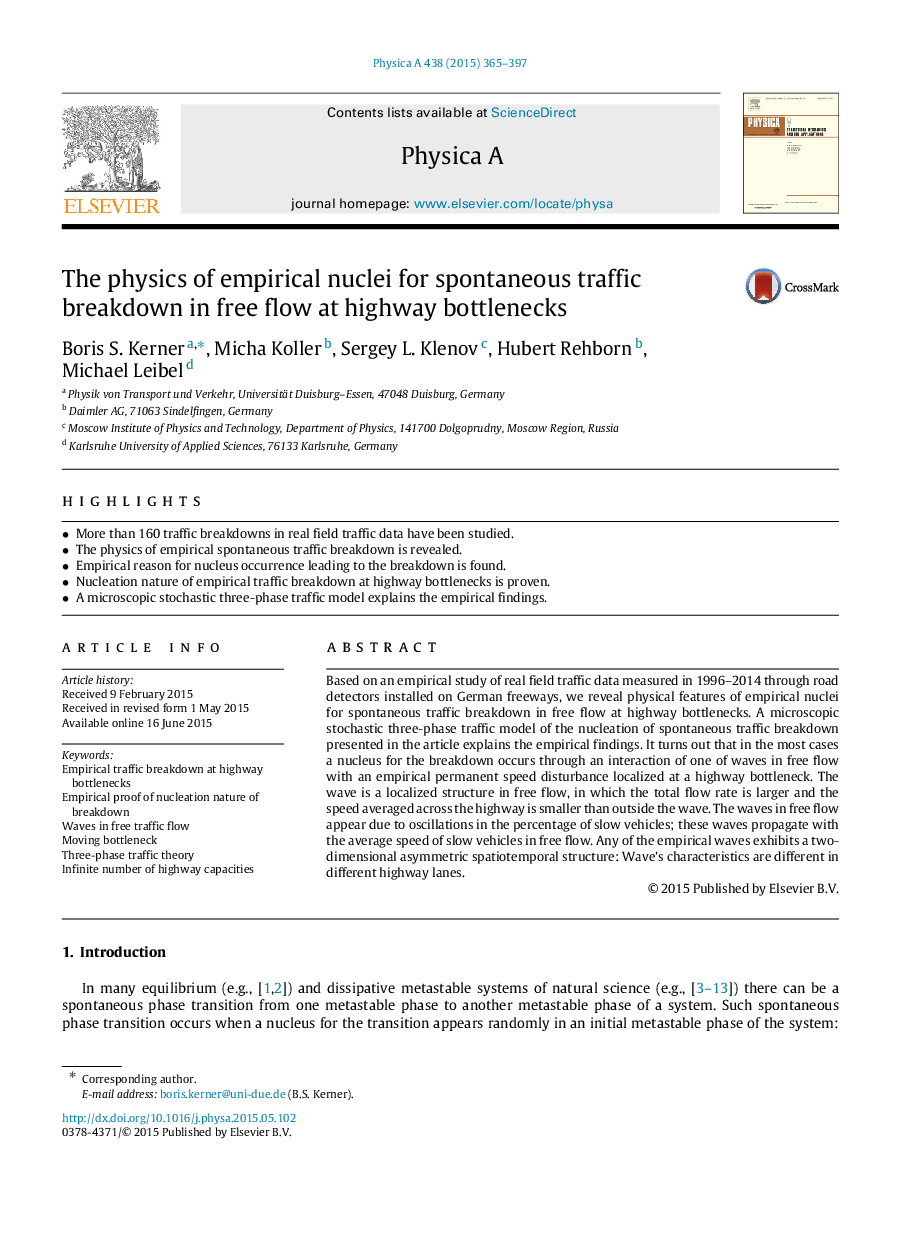| Article ID | Journal | Published Year | Pages | File Type |
|---|---|---|---|---|
| 974835 | Physica A: Statistical Mechanics and its Applications | 2015 | 33 Pages |
Abstract
Based on an empirical study of real field traffic data measured in 1996-2014 through road detectors installed on German freeways, we reveal physical features of empirical nuclei for spontaneous traffic breakdown in free flow at highway bottlenecks. A microscopic stochastic three-phase traffic model of the nucleation of spontaneous traffic breakdown presented in the article explains the empirical findings. It turns out that in the most cases a nucleus for the breakdown occurs through an interaction of one of waves in free flow with an empirical permanent speed disturbance localized at a highway bottleneck. The wave is a localized structure in free flow, in which the total flow rate is larger and the speed averaged across the highway is smaller than outside the wave. The waves in free flow appear due to oscillations in the percentage of slow vehicles; these waves propagate with the average speed of slow vehicles in free flow. Any of the empirical waves exhibits a two-dimensional asymmetric spatiotemporal structure: Wave's characteristics are different in different highway lanes.
Related Topics
Physical Sciences and Engineering
Mathematics
Mathematical Physics
Authors
Boris S. Kerner, Micha Koller, Sergey L. Klenov, Hubert Rehborn, Michael Leibel,
